It’s a bright winter’s day in Toowoomba, Queensland, and three-year-old Wynter Clarkson is atop a tiny plastic slide. She’s snuggled up warm in a pink jumpsuit and giant grey socks.
Tight ringlets of blonde hair are pulled into a mini bun on her head and her eyes are wide in anticipation of the upcoming descent.
“Push! Weight forward!” some adults encourage at the bottom. Wynter’s mum, Kellee Clarkson, 31, hovers, an arm either side of Wynter. She has the same tight blonde ringlets in the same bun, and the same look of anticipation.
After some bum wriggles, Wynter hits the descent to rapturous cheers. She looks around in joyful surprise at the applause, then claps on her own thigh to reward herself. It’s almost as if she knows that what she just did, almost completely by herself, is nothing short of a miracle.
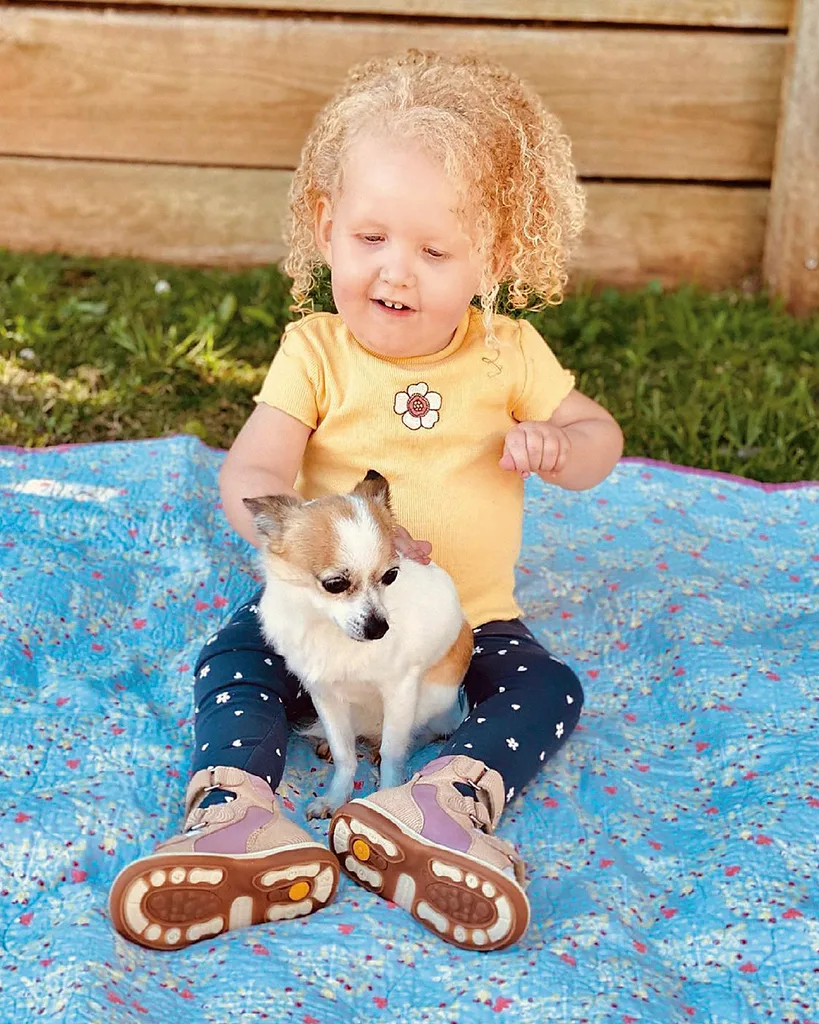
Kellee cherishes the small moments after nearly losing her daughter Wynter.
(Supplied)“She’s my little ratbag,” Kellee says fondly of Wynter (or Wynnie, as she calls her), who babbles loudly and happily in the background as we chat.
“She’s a real outdoors girl, and her cheeky attitude is emerging – she’ll say ‘no, no, no!’ when she doesn’t want to sleep.”
It’s little things, like picking flowers together in the garden, that Kellee cherishes now because of how close she came to losing Wynter.
In December 2018, Wynter Clarkson was diagnosed with spinal muscular atrophy (SMA), a degenerative muscle-wasting genetic disorder that attacks the motor neurons in the spine.
Approximately one in 6000 babies have SMA. Type 1, which Wynter has, is the most common and severe type. Most children who are diagnosed with it can’t sit up unsupported and the majority don’t survive beyond two. More than half die in the first year of life.
SMA can be diagnosed at birth with a simple heel-prick test and is much more effectively treated if it’s caught then. But not every state in Australia mandates that test so many cases are picked up late. And there is no cure.
These were some of the terrifying details Kellee read online the day her mother’s instinct told her something was wrong with her child and she began searching for answers.
“I struggle looking back at newborn photos,” she says. “I put a lot of blame on myself. It hurts me that I didn’t see Wynnie wasn’t kicking her legs properly. ‘I’m a nurse,’ I keep telling myself. ‘Why didn’t I know this?'”
When her partner, Jamie, 32, asked Kellee if she thought that Wynter might have cerebral palsy, Kellee got really upset.
“‘Why would you say that?’ I asked him,” she recalls. But deep down, she knew something wasn’t right, and video-called her best friend, who had a daughter four days younger than Wynter.
“When she put her daughter on, I saw the difference between her child and mine and my heart just sank,” she says. Her friend’s daughter was on her tummy rolling around; Wynter was stationary.
Kellee got off the phone and onto Google. Before long she was on a SMA mums’ noticeboard, discovering what the disorder was, and ominously, what it meant.
“All I could see was ‘it’s terminal, and they die before they’re two’. Wynter had all the symptoms,” Kellee says.
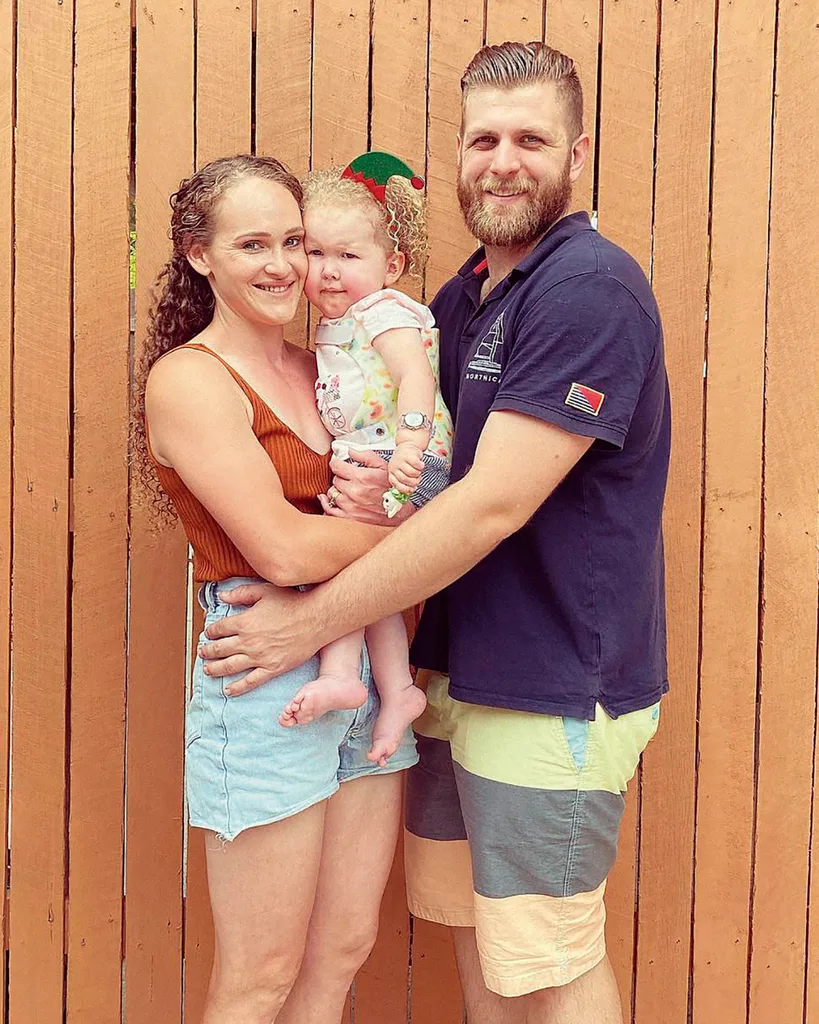
Kellee with Wynter and her husband Jamie who has been her rock.
(Supplied)Jamie got in from work and found Kellee weeping, Wynter huddled up in her arms. Kellee was repeating, over and over: “Something’s wrong. Something’s really wrong.”
With local paediatricians booked out for three months, Kellee began feverishly phoning every paediatrician within 125km of Brisbane. They were also fully booked.
Finally, there was a cancellation. “I tried to tell myself I was just being silly, but I was just so scared,” she says. When the diagnosis came, Kellee broke down.
“Jamie paid the bill; I was crying too much,” Kellee says. “He was my absolute rock. Usually, I take charge with appointments but all I remember saying was, ‘No, no, no’. I knew what this meant.”
Wynter was immediately rushed to hospital. Nurses, who had already read up on her probable diagnosis, came out with a box of tissues for these newly crestfallen young parents as their tiny daughter was whisked away.
At the hospital’s neurology department, in a haze of tears and grief, a brochure was handed to Kellee about new, revolutionary SMA treatments. One, Spinraza, which Wynter started the next day, was intense. It required a lumbar puncture every four months.
“Wynnie was too fragile for anaesthetic,” Kellee explains. “You could see the needle really hurt her.” It was painful for Kellee to watch Wynter’s screams as the realities of their new life sunk in.
“One dose was on Christmas Eve in December 2018. It was tough. It was horrendous and crushing to watch her looking at us in agony, knowing these hospital visits could be every four months for the rest of her life.”
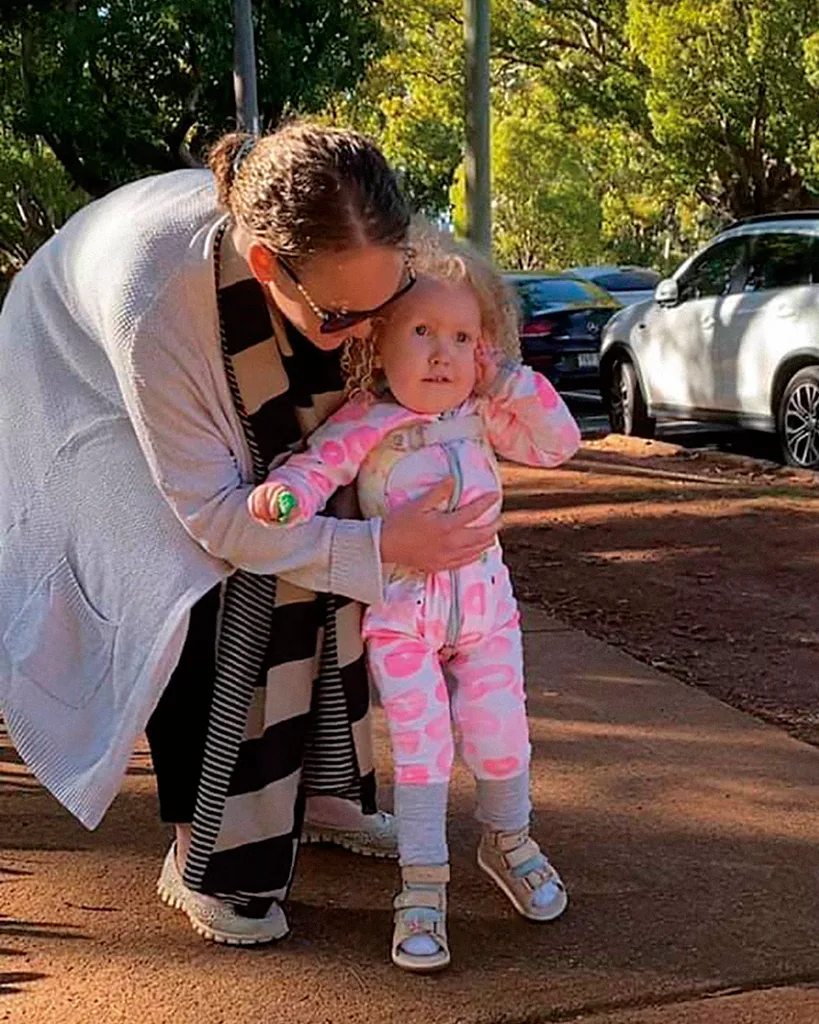
“It was horrendous and crushing to watch her looking at us in agony.” Kellee could only watch on as her daughter struggled with the SMA treatments.
(Supplied)Given its limited impact on the progression of certain aspects of the disease (it didn’t restore Wynter’s lung function or swallowing), some parents choose to take their baby home and prepare to say goodbye rather than having them suffer on Spinraza.
Each child’s response depends on how far the disease has progressed when they start the treatment.
However, that same month a groundbreaking new single injection gene therapy, Zolgensma, was being trialled in America. And it was already being described as a wonder drug, promising a potential life free from excruciating lumbar punctures, and potentially a longer lifespan.
The Clarksons watched the emergence of this new medicine closely. There were just two catches. First, a race against time: little Wynter would need it by the time she was two, or she’d become ineligible and, without ongoing treatment, likely become terminally ill.
The second catch was the cost. At $3.2 million, it was the most expensive single dose medication in the world. “Even if our whole family sold everything, we wouldn’t be close,” Kellee says. “We were just really gutted.”
One possible avenue was a global lottery run by the manufacturer, Novartis. But with just 100 doses granted, and 60,000 global diagnoses annually, it was a long shot.
“That was an awful feeling,” she says. “It gave us false hope. It was like being teased with those almost impossible odds.”
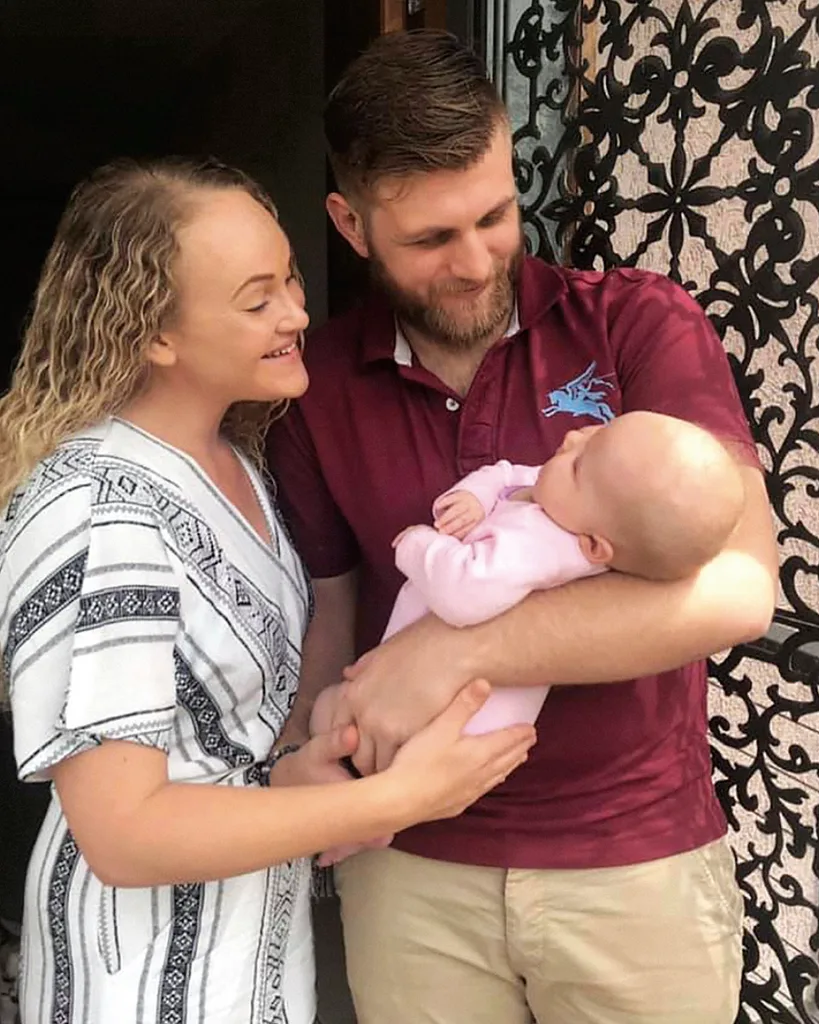
Wynter was just five months old when she was diagnosed with SMA.
(Supplied)Their next option was to campaign. They poured out their hearts on a GoFundMe page. “I emailed hundreds of people – those in power, people with big platforms, local companies,” Kellee remembers.
And $66,000 came flooding in.
“We had so much support from everyday, generous, caring people,” she says. But it wasn’t enough. They were still, staggeringly, $3.13 million short. It felt impossible. The Clarksons were at a complete loss.
In May 2019, the US Food and Drug Administration approved Zolgensma. This meant that the world’s most expensive drug was, suddenly, available without that prohibitive price tag – but only in America. It still wasn’t available in Australia and the clock was ticking – Wynter was now nine months old. The Clarksons knew what they would need to do to get their daughter this wonder drug: move to the US.
Jamie secured an electrical engineering position in Utah. Kellee booked removalist companies and began packing up their Toowoomba home. Jamie was sorting all the necessary visas.
Their precious, curly-haired, dinosaur-loving, cheeky little girl was finally going to get the shot at life her parents had been dreaming about. Then the pandemic hit.
Jamie’s Utah job all but fell through. As they watched the US opportunity slowly slip away, Kellee allowed a momentary feeling of defeat.
“It felt like the world was against us,” she admits. But the Clarksons didn’t give up.
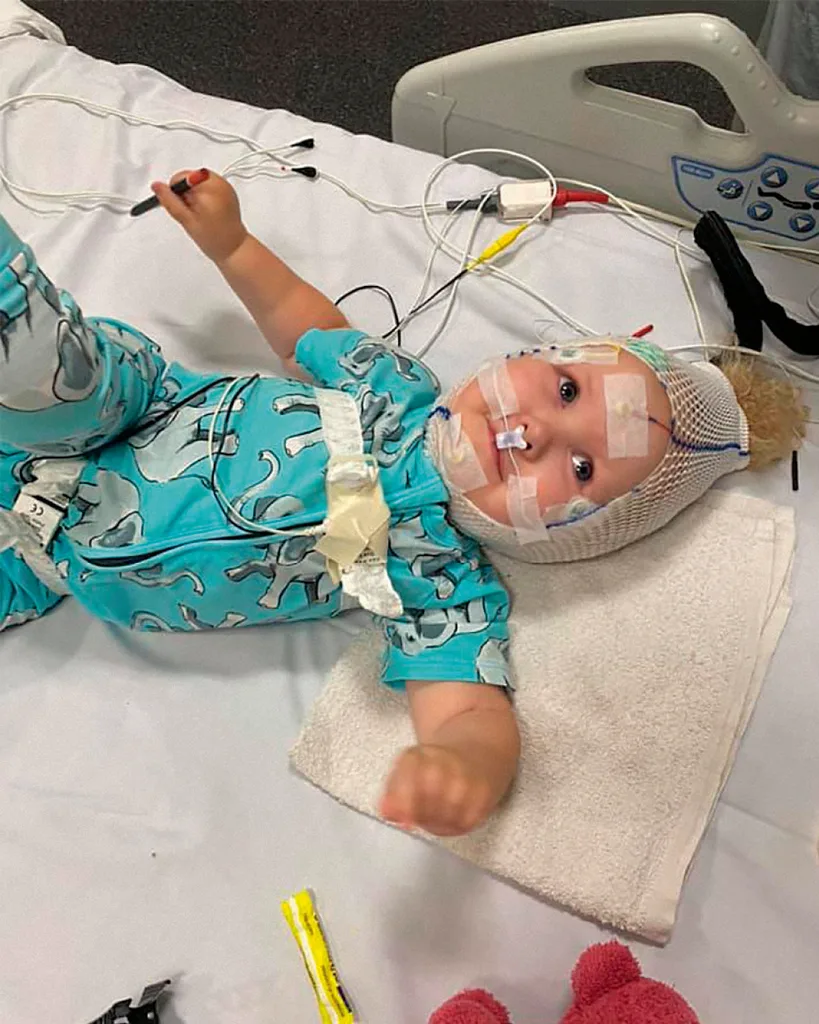
Wynter pictures during her gruelling drug therapy.
(Supplied)“I’m a realist,” Kellee says. “I knew the chances were slim, but I felt this huge surge of determination come over me: I don’t care what it takes, I will absolutely 100 per cent get this treatment for her. I will move mountains. In my heart of hearts, I just knew, deep down, the immense love I have for my child was going to be my driving force.”
In truth, though, the family was running out of options. Wynter was now 21 months old – just three months away from the deadline for Zolgensma to be effective in her little body.
Then, a tiny crack of light appeared. Kellee became aware of a little-known government scheme called the Medical Treatment Overseas Program (MTOP). And she began lobbying politicians for the funds to acquire Zolgensma through that scheme.
In February 2020, she received a call from one of the many politicians she’d lobbied – Senator Pauline Hanson. Kellee burst into tears as the senator spoke the words she was so very desperate to hear: “I’ve got the $3.2 million for you”.
Initially, the program was going to pay for the family’s flights to the US, but as the pandemic worsened, that became unfeasible. Another roadblock.
Then, as if the universe was absorbing the driving force of one mother’s love, another minor miracle occurred. In an unprecedented move, a highly unusual deal was struck to bring Zolgensma to Australia, even though it wasn’t yet TGA approved. The wish Wynter’s mum had made for her was to come true.
Three months later, in May 2020, the family drove 10.5 hours from Toowoomba to Sydney, where Wynter received the life-saving treatment.
“We couldn’t risk getting a plane due to COVID, but we also had to take regular breaks as the disease had progressed to the point that Wynter struggled to stay upright for long,” Kellee says.
Two weeks of quarantine were required on arrival and return. But then, in just 60 minutes of intravenous infusion, Wynter finally received the gene she was missing.
The unprecedented move to bring Zolgensma here didn’t just help Wynter. It meant that any Australian children living with SMA Type 1 – children who would either have died at two, or become permanently disabled – could now receive it. Kellee knows of at least seven children this has already helped.
One is Mariana Edwards Baron, who is 16 months old. She sings Happy Birthday in the background as I chat to her mum, Adriana, 36.
“It’s no-one’s birthday, she just loves the song,” Adriana says. Mariana was diagnosed at three months, while the family was in lockdown.

Mariana with her sister Valentina.
(Supplied)The diagnosis, Adriana says, felt like “a concrete wall crushing my heart. All I could see is she’d need breathing support 24/7, a feeding tube and that 90 per cent of kids die before 18 months. Mariana was 3.5 months old. I was concerned what her quality of life would be.”
The neurologist explained that some parents choose not to treat their children, instead allowing them to go into palliative care. Adriana and her husband, Scott, now had to make an almost impossible decision.
“When we returned from the hospital, we had to calm down as we didn’t want [Mariana’s sister] Valentina, who is almost three, to see us in such a mess,” Adriana says. “We took it in turns to go upstairs and quietly break down and sob and grieve.”
The couple was torn.
“Neither of us wanted our daughter to suffer,” Adriana says. “But I couldn’t bear the thought of seeing her deteriorating till she died.”
To help her reach a decision, Adriana tracked down a 34-year-old, wheelchair-using man with SMA.
“I asked him if his life has been worth living. I was terrified my daughter would hate me for continuing her life. He told me, ‘we don’t miss what we don’t know,’ and that his life had been fulfilling. That’s when I knew we had to fight to get her treatment.”
Kellee was one of the first ‘SMA mums’ Adriana connected with.
“She helped me a lot in understanding the treatments, and what SMA children are able to do,” Adriana says.
When she learnt about the $3.2 million wonder drug, she was shocked and devastated. Mariana urgently needed Zolgensma before her breathing and swallowing function, which was so far intact, deteriorated. The family tried everything.
“We put up ads to see if someone with lots of money would help us. I even wrote to the CEO of Novartis asking for a discount. He was very polite but unable to do that due to regulations. It sounds stupid now, but we were desperate.”
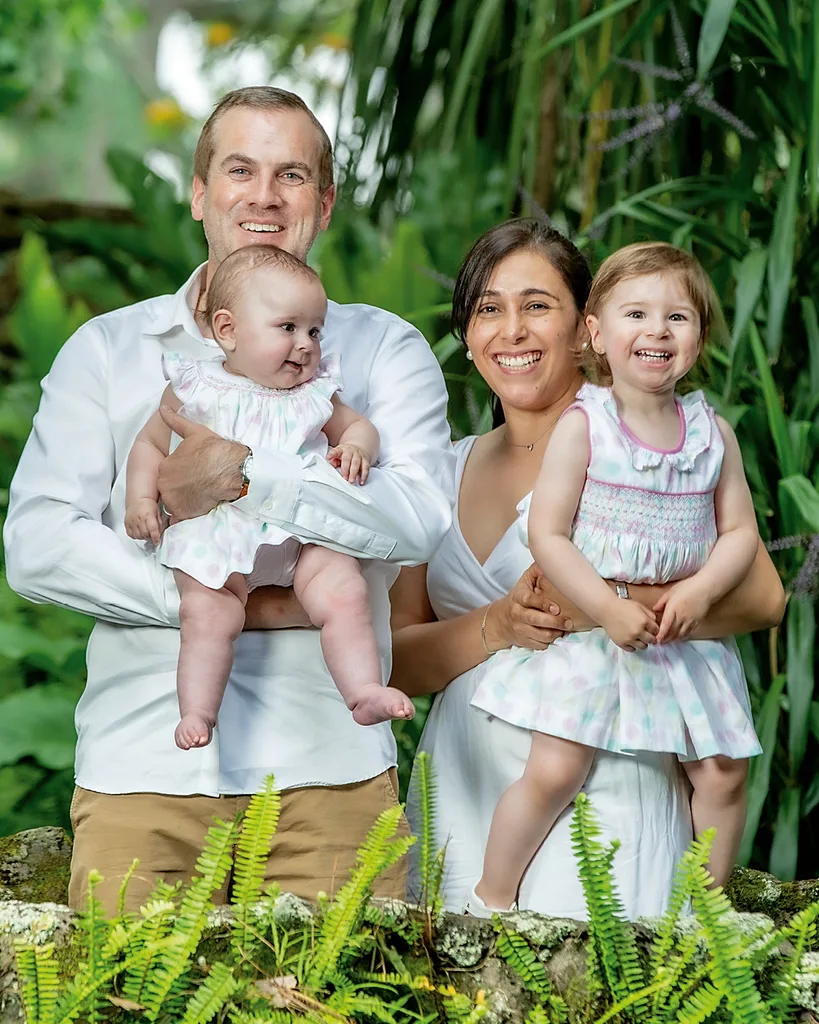
Mariana is now 15 months and is just starting to walk, a milestone only 1 percent of SMA children ever acheive.
(Chewable Pics)When Adriana learnt that, as a result of Kellee’s lobbying, Zolgensma was miraculously being brought to Australia and funded by the MTOP scheme, she felt “exactly like the swimming coach [Dean Boxall] who went wild at the Olympic gold medal in that viral video!
“Kellee fought really hard and set up the road for all of us,” Adriana says. As she watched the gene therapy enter her daughter’s veins, she wept – this time, tears of joy.
What would her message to Kellee be today? There’s a pause and some quiet weeping. After a breath, she says, “No words could convey my massive gratitude for that amazing woman – I just want to hug her.”
As we talk, Mariana grabs onto the couch and sidesteps around it. A neurologist had previously told Adriana just one per cent of SMA children walk.
“I said, ‘my daughter will be in that one per cent. She’s a miracle. No one can place limits on my daughter now. Only Mariana will show me what she can do’.”
Adriana and Kellee are now campaigning for the newborn heel prick test, which picks up SMA and allows children to be treated from birth before any deterioration through rapid motor neurone loss occurs. It’s on trial in NSW, the ACT and WA.
“It’s hard to shake – if we lived across the border, Wynter could have led a normal life,” Kellee says. These mums don’t want any parent to go through what they have when it’s preventable.
However, the Queensland Health Minister, Yvette D’Ath, has pushed the issue back onto the federal government:
“Queensland’s strong preference is to continue a national approach to newborn screening, and I have written to [federal Health] Minister [Greg] Hunt requesting this matter be discussed at a Health Ministers’ meeting in the near future,” she told The Weekly.
Julie Cini, CEO of SMA Australia, founded the charity after both her daughters died of the disease, aged 10 months and 12 months respectively.
“Before my kids died, I looked them in the eye and promised them I’d fix this,” she says. “I’ve run this charity for 17 years and I can finally say that’s the legacy my babies left on this Earth: access to treatments, genetic testing and the ongoing campaign for newborn screening.
“Up until two and a half years ago doctors were still telling families they’d lose their babies to SMA – we were losing a baby a month from it. Now I see kids who received treatment within their first six months running and jumping. It’s phenomenal. And it only happened because of advocacy and families telling their story.”
Wynter has improved significantly in the year she’s been on Zolgensma. She whizzes around in her electric wheelchair and needs ventilation at night, but, for the first time since she was born, Kellee now is “very hopeful” she’ll soon breathe on her own.
Reflecting on a triumph over tragedy that has saved at least seven little lives, Kellee demurs, saying plenty of people were involved.
“But this,” she adds, “is more than I could ever have dreamed of.”
You can read this story and many others in the January issue of The Australian Women’s Weekly – on sale now

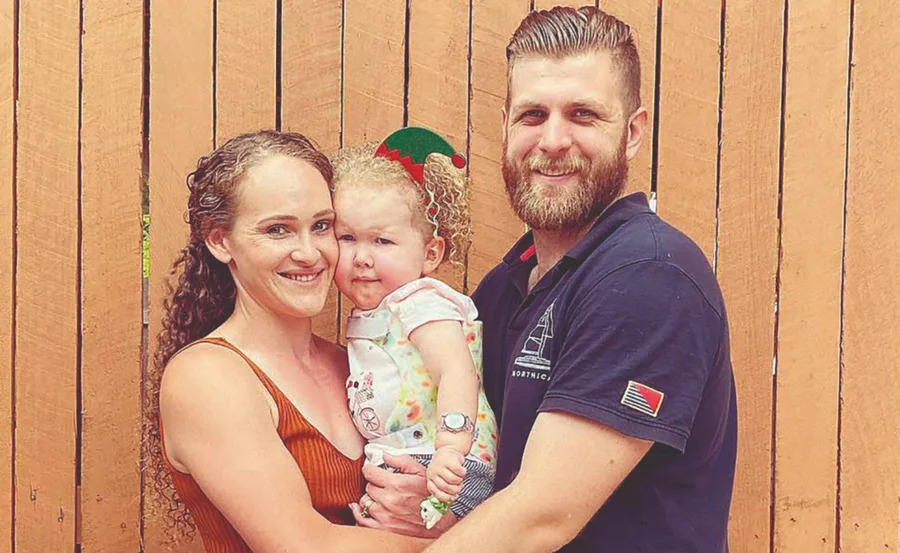

.jpg?resize=380%2C285)
-copy.jpg?resize=380%2C285)
.jpg?resize=380%2C285)
